
|
Javukha was the third king mentioned in the Schøyen copper scroll inscription. Having this explicit mention of his name solved a long-
standing debate; many authors had maintained that the coins with the name Javukha must have been issues of Toramana; they read the name on the
coins as Jabula and related it to the title jaUvla applied to Toramana in the Kura inscription. But now we are clear that there was indeed a king
named Javukha and these coins are his.
The continuing debate with regard to this king is whether the coins with the name Zabokho (see below) are his or of another king. I would maintain that it is
almost certain that these coins are all of the same king. The coins with the javukha legend are all in Brahmi, while the coins with zabokho
are all in Bactrian script. Thus the "different" names may well just be alternative renditions in scripts that can only imperfectly represent foreign sounds. For example,
Brahmi has no letter for the za sound, so ja would be a logical way to represent it. Similarly, Bactrian does not have a letter for va and
so ba would be an alternative. So there's a perfectly good explanation for the apparently different names.
Besides the "different" names, the other reason some people think these are two different kings is that the Zabokho portrait coins are all smaller and of a
different style than the Javukha coins. But this could simply refelct the fact that they were made at different mints: the Zabokho coins perhaps in a mint in
Bactria and the Javukha coins in Gandhara. Further, these are the only two series that feature horse-rider types, suggesting a close relationship between
them. Finally, I publish below a Javukha coin in the small format "Zabokho" style, thereby closing that supposed "gap" between them. Thus it seems to
me to be much more likely that these are coins of the same king than that they are different kings.
|
 |
Javukha |

|
Javukha silver drachm, c. late-5th century
Crowned bust of king right, with crescent forehead ornament and hanging ribbon ends
lunar crescents on shoulders, "bull" tamgha at left, ribboned club at right,
Brahmi legend at left: shahi, at right: javukha /
Fire altar, flanked by armed attendants
Weight: 3.16 gm, Diameter: 30 mm., Die axis: 3:30 o'clock
Ref: Göbl 49
|
 |
I have not been able to find a clear antecedent for this coin among the anonymous early Alchon
coins. Given the style, the Brahmi legend and the lunar shoulder crescents, it appears this coin type owes its inspiration to the coins of Khingila. I
therefore suspect that Javukha came to power well after Khingila, but while Khingila still ruled, perhaps in a geographically different area. Note the
unusual way in which the word shahi has been engraved ... in a vertical format, with the letters apparently transposed, and the diacritic mark
missing, rendering the word as hasha.
|
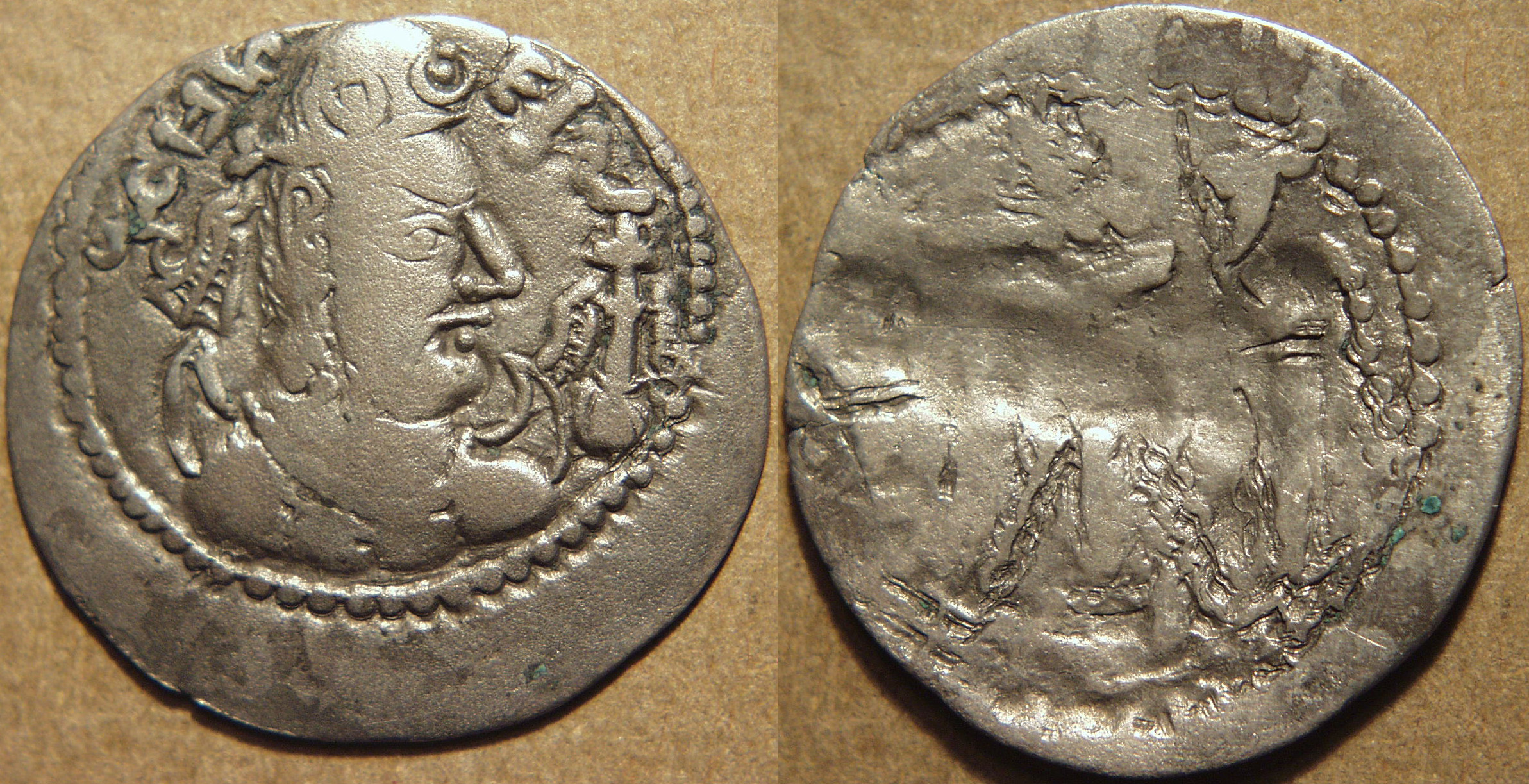
|
Javukha silver drachm, c. late-5th century
Crowned bust of king right, with crescent forehead ornament and hanging ribbon ends
lunar crescents on shoulders, "bull" tamgha at left, ribboned club at right,
Brahmi legend at left: shahi, at right: jaookha /
Fire altar, flanked by armed attendants
Weight: 3.16 gm, Diameter: 29.5 mm., Die axis: 3 o'clock
Ref: Göbl 51
|
 |
The spelling of the king's name on this coin, jaookha underlines the idea that the name was
a foreign one with sounds unfamiliar to the Indian die-cutters, who struggled to find the ideal way in which to represent the name.
|

|
Javukha ? (or follower) silver drachm, c. late-5th century
Crowned bust of king right, with crescent forehead ornament and hanging ribbon ends
lunar crescents on shoulders, "bull" tamgha at left, conch at right,
Brahmi legend at left: jayatu, at right: yapa ? /
Fire altar, flanked by armed attendants
Weight: 3.44 gm, Diameter: 29 mm., Die axis: 3 o'clock
Ref: Göbl 52
|
 |
The attribution of this coin is tentative. The style, including the lunar shoulder crescents, seems to
link the coin to the previous two of Javukha. The conch is a symbol used on the "Zabocho" coins. So an assignment to Javukha or possibly a follower
of Javukha, seems reasonable. The legend, however, is unclear. It seems to read jayatu at left and yapa (meant to be shahi perhaps ?)
at right. A legend of jayatu shahi would be consistent with an attribution to Javukha. We await a better specimen to get a clearer attribution.
|
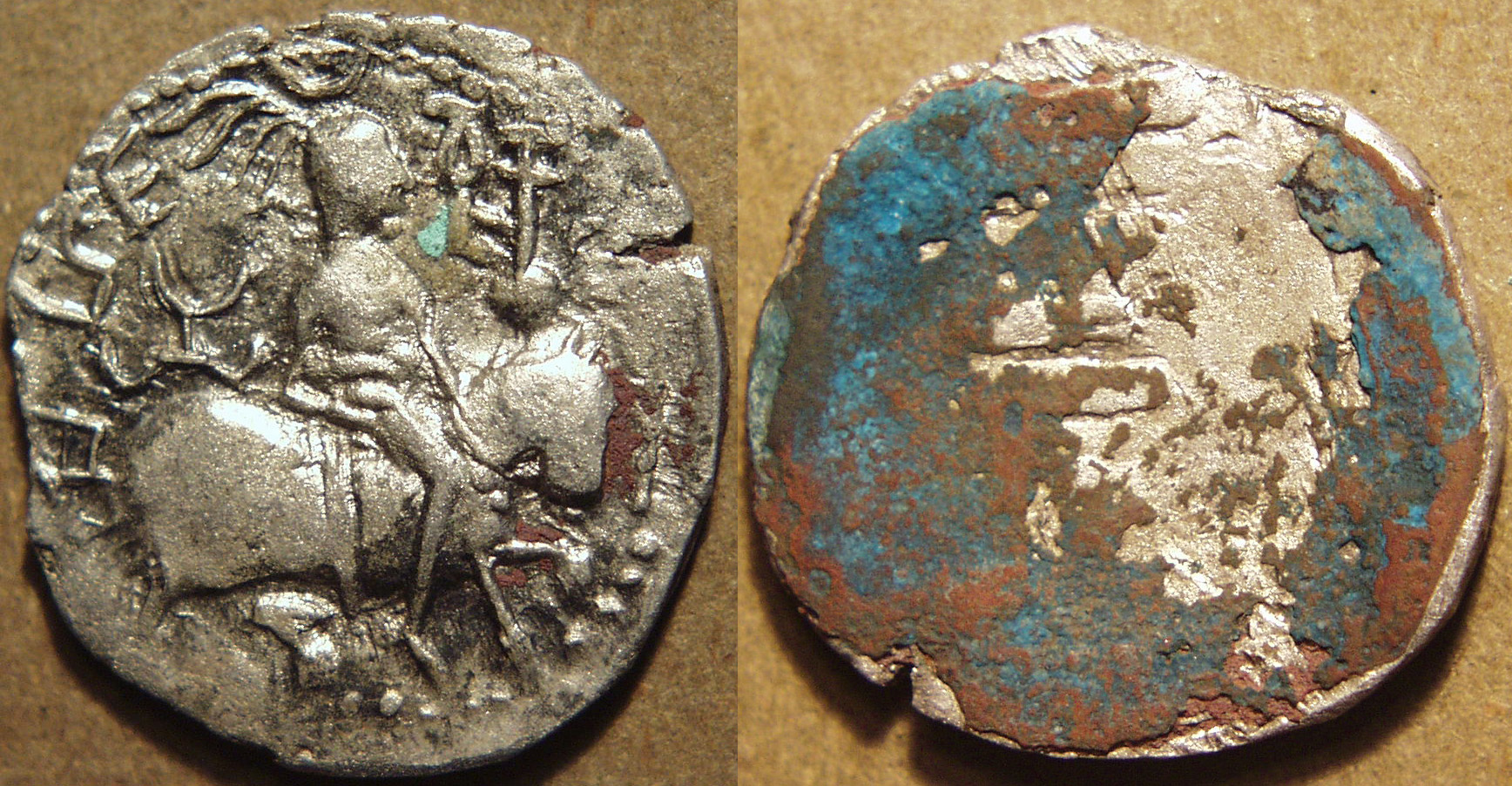
|
Javukha silver drachm, c. late-5th century
King mounted on horse right, wearing crescent crown with trailng ribbon ends
"bull" tamgha at left, club at right,
Brahmi legend at left: shahi ja, at right: vu(kha) /
Fire altar, unattended
Weight: 3.16 gm, Diameter: 20.5 mm., Die axis: 3 o'clock
Ref: Göbl 117
|
 |
Javukha issued these very interesting and dramatically different horse-rider type coins, probably
inspired by the horse-rider dinars of the Guptas. Note the presence of the two symbols seen on his earlier portrait drachms: club and "bull"/lunar tamgha.
|
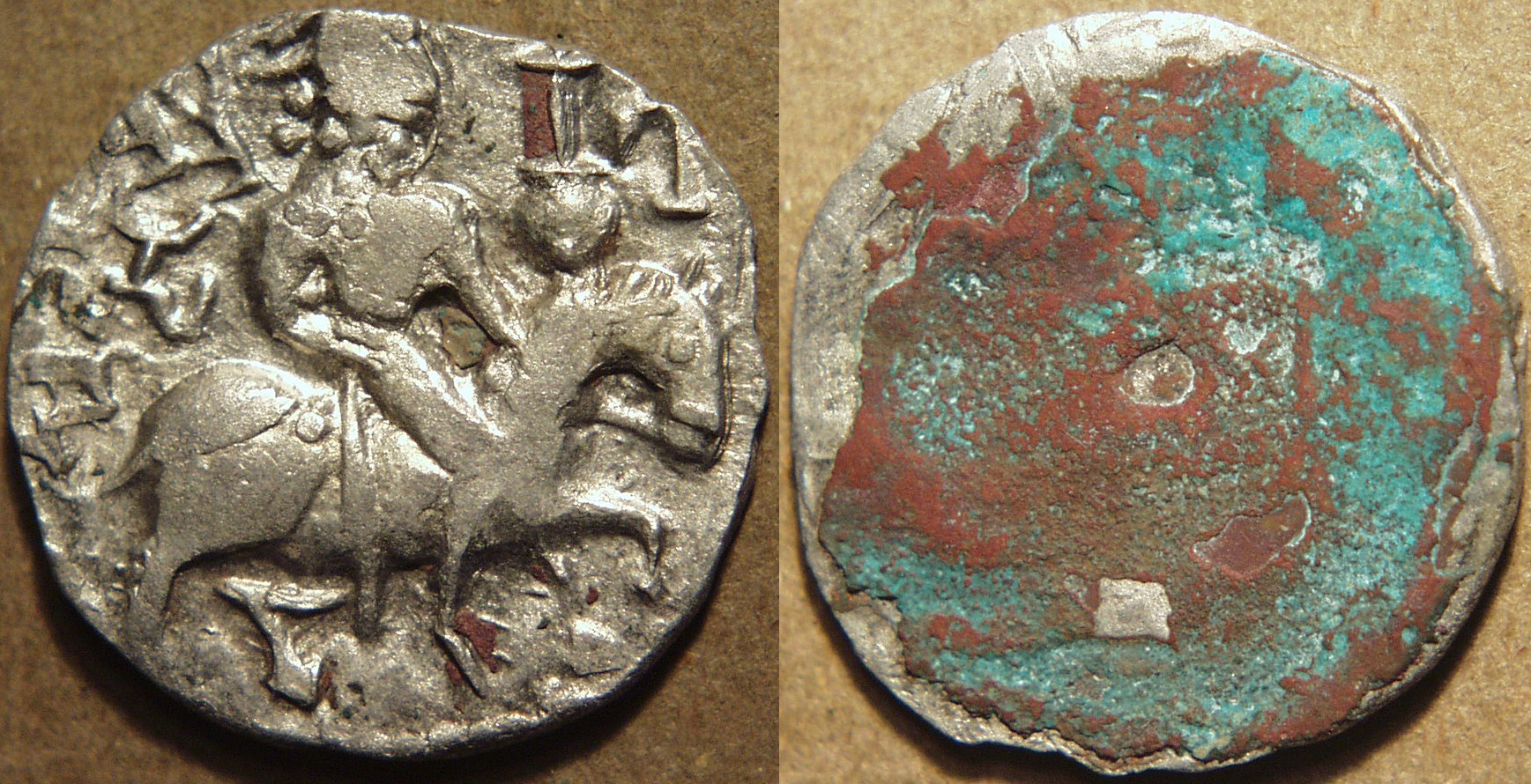
|
Javukha silver drachm, c. late-5th century
King mounted on horse right, wearing crescent crown with trailng ribbon ends
"bull" tamgha at left, club at right,
Brahmi legend at left: shahi javu, at right: kha /
Fire altar, unattended (not visible)
Weight: 3.30 gm, Diameter: 21.5 mm., Die axis: ? o'clock
Ref: Göbl 117
|
 |
This coin is similar to the last one but has a different legend arrangement, with the letter vu
in the king's name moving over to left of the king's head.
|
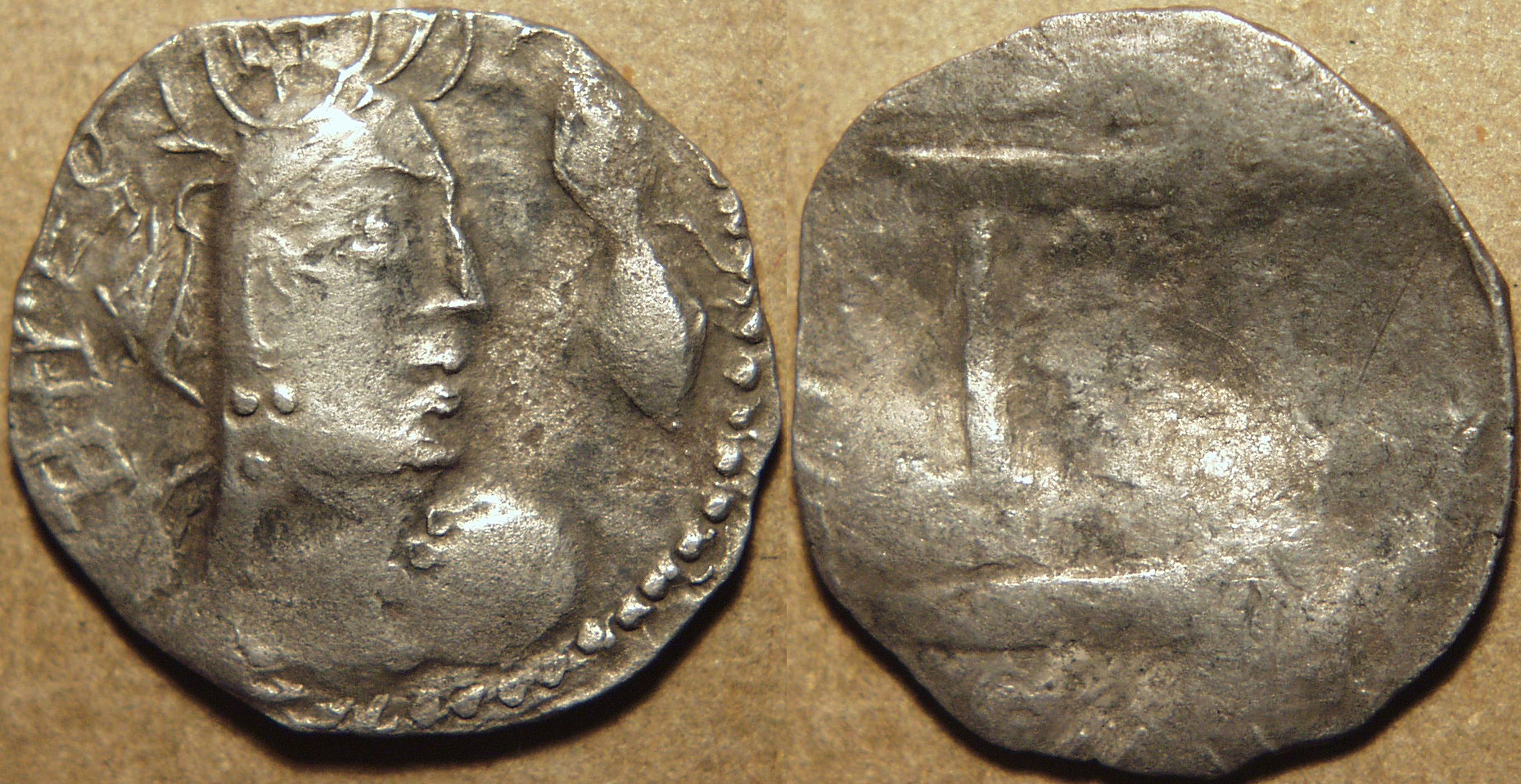
|
Javukha silver drachm, c. late-5th century
Crowned bust of king right, with crescent crown and hanging ribbon ends
stylized thunderbolt at right,
Brahmi legend at left: shahi javu(kha) /
Fire altar, flanked by armed attendants ?
Weight: 3.04 gm, Diameter: 23 mm., Die axis: 3 o'clock
Ref: Göbl --- (unpublished)
|
 |
This coin, previously unpublished, bridges the "gap" between the coins of Javukha and the
so-called "Zabokho" coins that follow. The crown style and the letter forms resemble those on the previous horse-rider type coins; at the same time, the
crown and size format of the coin resembles those of the Zabokho coins. There is also a Zabokho type that features the thunderbolt as on this coin.
The coin therefore appreciably strengthens the case for believing that the Javukha and Zabokho coins were issued by the same king.
|
 |
 |
 |
"Zabokho" |
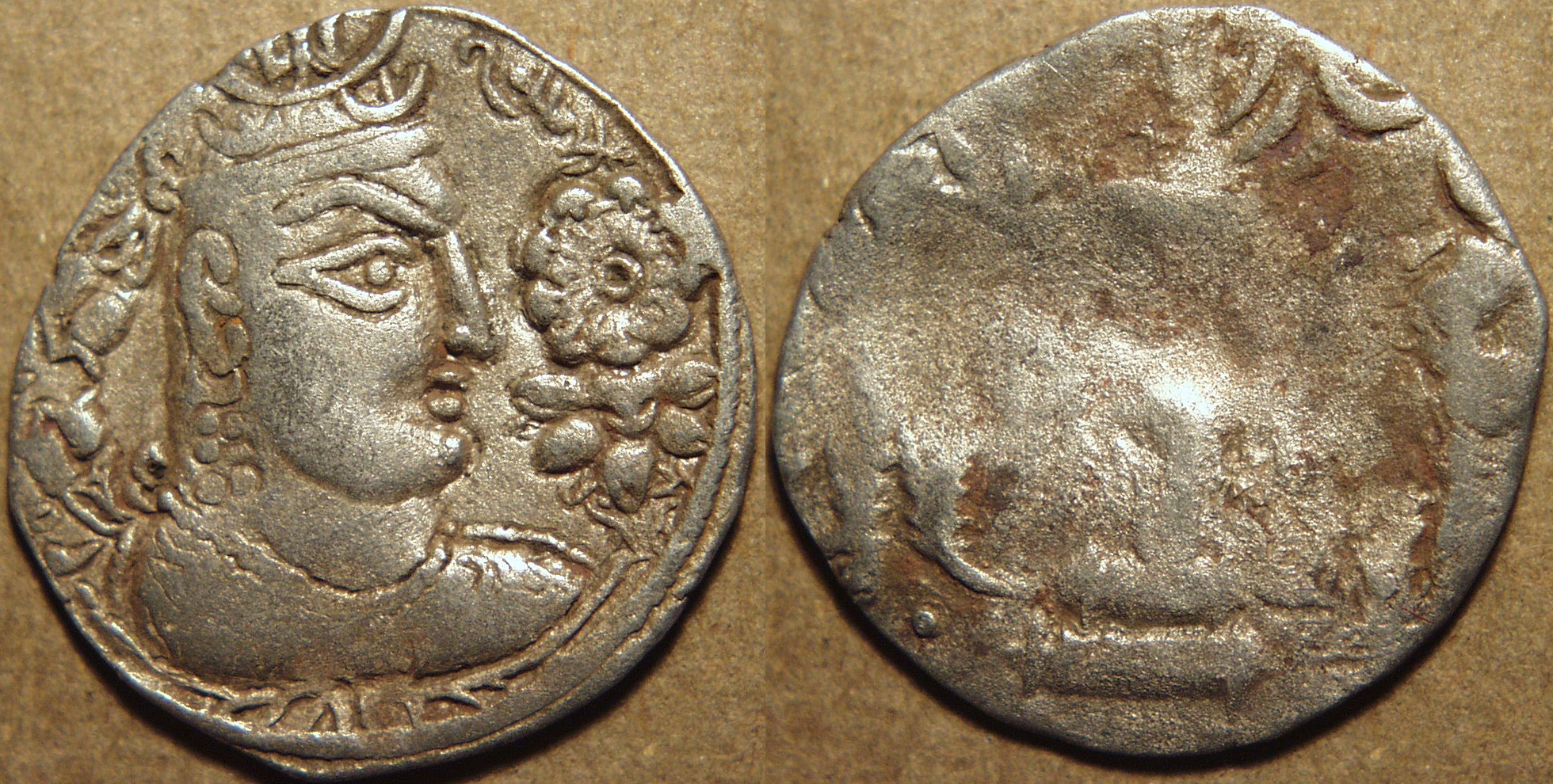
|
Javukha silver drachm, c. late-5th century
Crowned bust of king right, with crescent crown and hanging ribbon ends
chakra or wheel on top of lotus flower at right, indistinct object at left,
Bactrian legend at left: (miirosono shao), at right: zabokho /
Fire altar, flanked by armed attendants ?
Weight: 3.04 gm, Diameter: 23 mm., Die axis: 3:30 o'clock
Ref: Göbl 96
|
 |
This coin is typical of the so-called "Zabokho" coins. It has a small flan and a crown topped by a
large crescent (with a trident inside the crescent). These details are different from the first few Javukha coins listed above, but are matched by the last
Javukha coin.
|

|
Javukha silver drachm, c. late-5th century
Crowned bust of king right, with crescent crown and hanging ribbon ends
thunderbolt at right, indistinct object at left,
Bactrian legend at left: (miirosono shao), at right: zabokho /
Fire altar, flanked by armed attendants ?
Weight: 3.46 gm, Diameter: 23.5 mm., Die axis: 3:30 o'clock
Ref: Göbl 96A
|
 |
This coin, with its thunderbolt symbol, closely matches the last Javukha coin.
|

|
Javukha silver drachm, c. late-5th century
Crowned bust of king right, with crescent crown and hanging ribbon ends
trident at right, indistinct object at left,
Bactrian legend above right: zabokho /
Fire altar, flanked by armed attendants ?
Weight: 3.46 gm, Diameter: 22.5 mm., Die axis: ? o'clock
Ref: Göbl 101
|
 |
Another Zabokho type, this time with a trident topping a vase instead of the thunderbolt symbol.
|
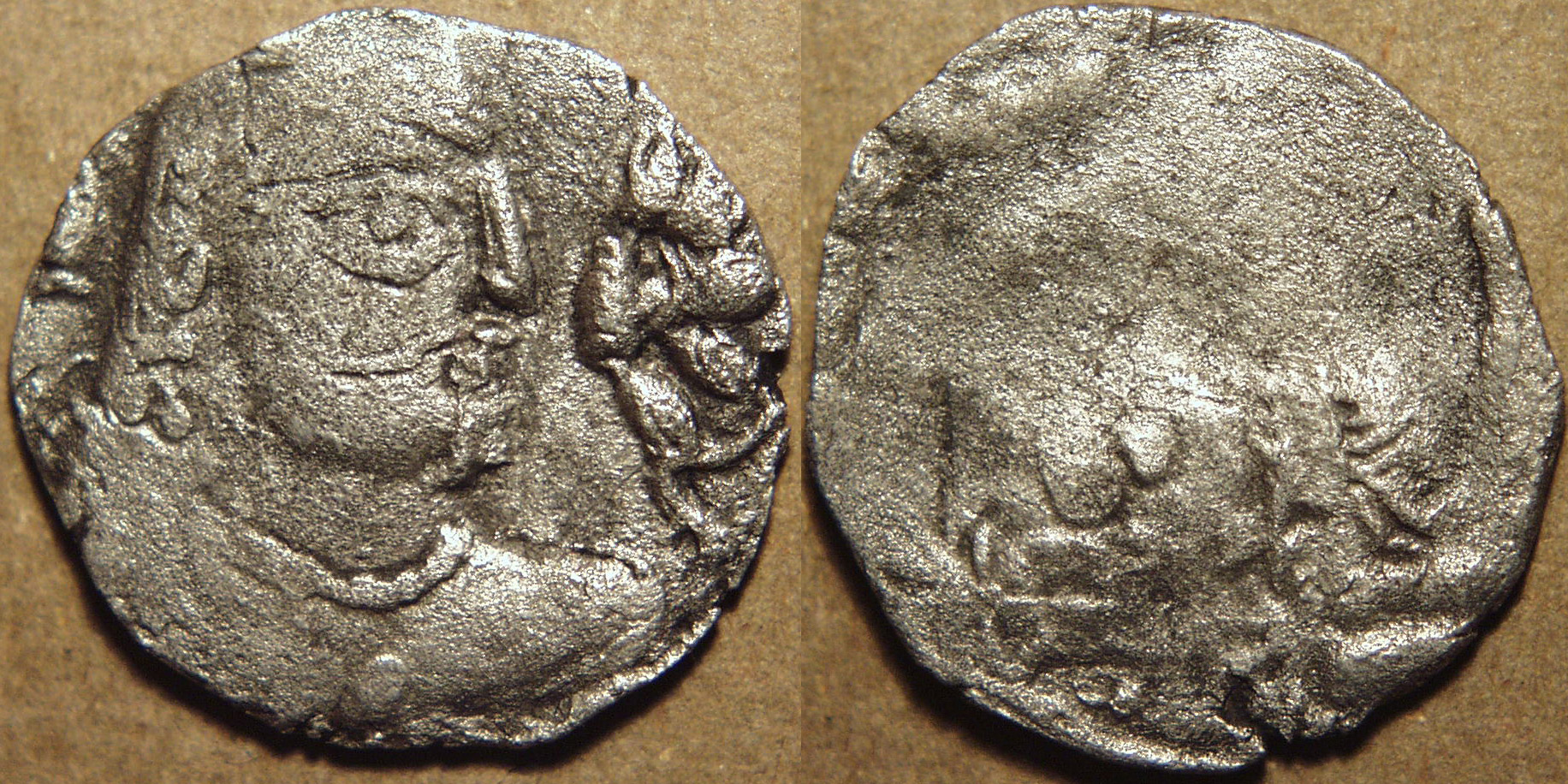
|
Javukha silver drachm, c. late-5th century
Crowned bust of king right, with crescent crown and hanging ribbon ends
lotus blossom at right, indistinct object at left,
Fire altar, flanked by armed attendants ?
Weight: 3.46 gm, Diameter: 22 mm., Die axis: ? o'clock
Ref: Göbl 104
|
 |
Although his name is not visible on this coin, this appears to ba another Zabokho type,
this time with a beautiful lotus blossom at right.
|
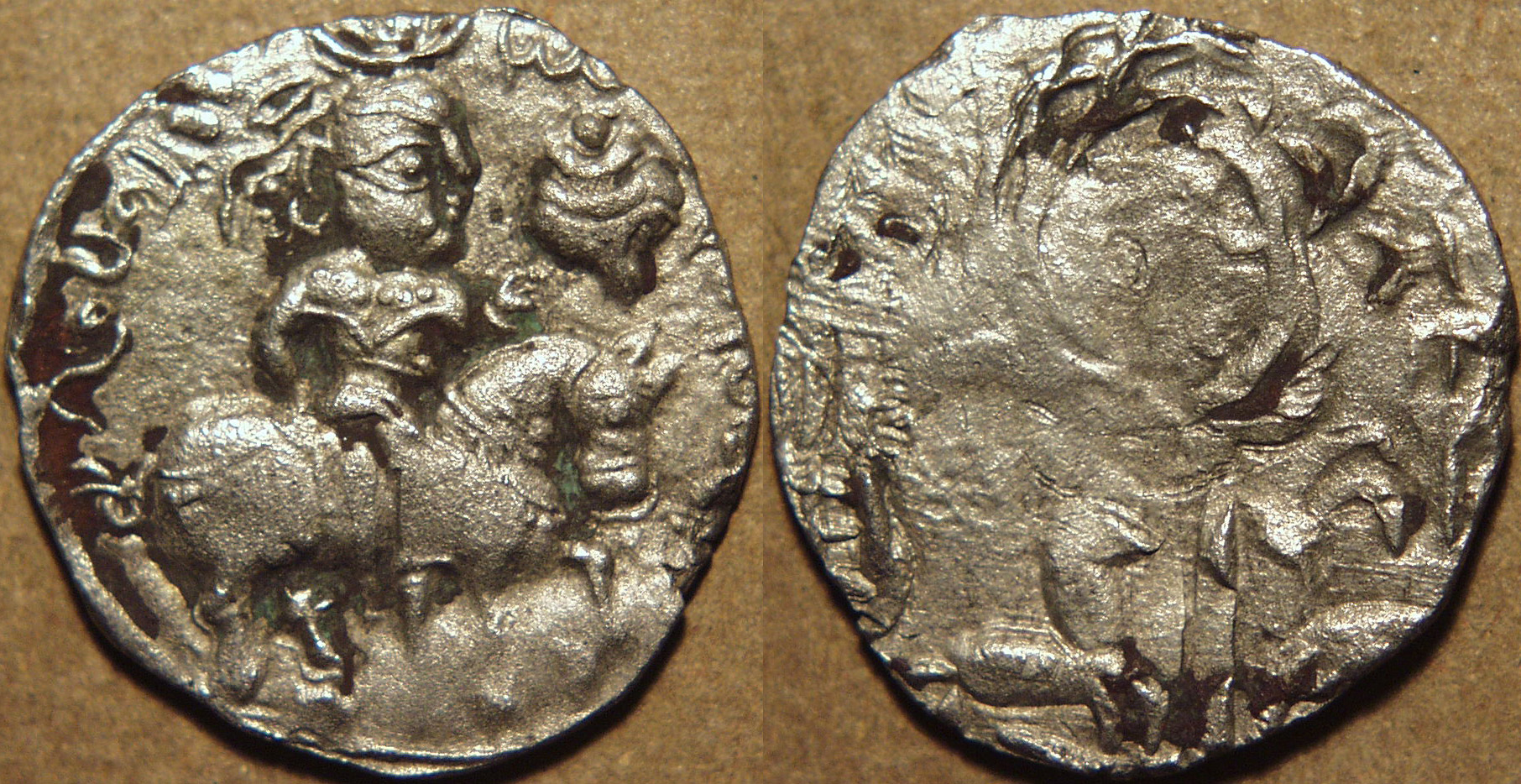
|
Javukha silver drachm, c. late-5th century
King mounted on horse right, wearing crescent crown with trailng ribbon ends
conch at right, Bactrian legend at left: zabokho /
Solar disc standard, flanked by two animals
Weight: 3.20 gm, Diameter: 22 mm., Die axis: 12:30 o'clock
Ref: Göbl 106
|
 |
There are also horse-rider type coins with the zabokho legend, providing
further evidence of the close connection between the Javukha and Zabokho coins. These are the only silver horse-rider coins in the entire
Alchon coinage.
|
|
|